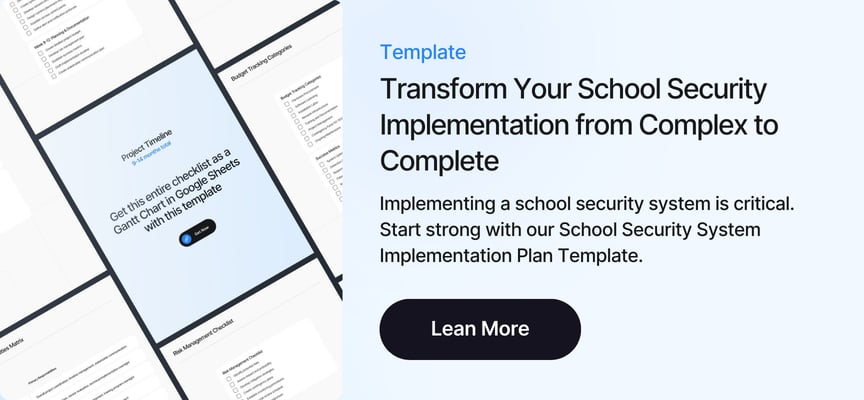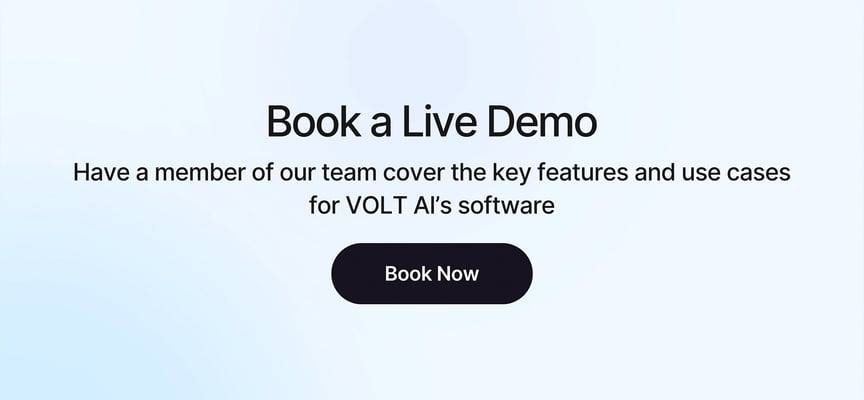Top Security Camera Providers for Enterprise Solutions
Your choice of enterprise security cameras directly impacts safety outcomes, operational efficiency, and long-term costs. Modern security cameras now serve as critical components in comprehensive security systems rather than mere recording devices, especially as artificial intelligence and cloud capabilities transform the industry.
The US market features several prominent security camera manufacturers focused on commercial and enterprise applications. Each brings distinct advantages to different security environments.
Read Now: The Future of Security: AI Security Cameras
Axis Communications (US Operations)
While Axis originated in Sweden, their substantial US operations and market presence make them a key player in the American enterprise security camera sector. Axis specializes in network cameras and has pioneered many industry advancements.
Key Strengths:
- Exceptional image quality in challenging lighting conditions
- Robust build quality with industry-leading reliability ratings
- Advanced analytics capabilities built into camera firmware
- Comprehensive API for third-party integration
Limitations:
- Premium pricing compared to most competitors
- Some models require separate licenses for advanced features
Axis Communications is Best For:
Organizations prioritizing image quality and reliability over initial cost concerns. Particularly strong in critical infrastructure, financial institutions, and large corporate environments.
Avigilon (Motorola Solutions)
This US-based manufacturer, now part of Motorola Solutions, specializes in high-definition surveillance systems with strong analytics capabilities.
Key Strengths:
- Industry-leading resolution options (up to 30MP)
- Exceptional low-light performance across product lines
- Native AI capabilities in many camera models
- User-friendly management software
Limitations:
- Higher price point than many competitors
- Optimal performance often requires Avigilon's own VMS
Avigilon is Best For:
Organizations requiring exceptional detail capture, such as critical infrastructure, transportation hubs, and facilities needing license plate or facial recognition capabilities.
Hanwha Techwin America
Though originally a Korean company, Hanwha maintains substantial American operations and manufacturing, qualifying them as a US provider for many procurement requirements.
Key Strengths:
- Excellent balance of performance and value
- Comprehensive product range from budget to premium
- Strong low-light capabilities in mid-range models
- Built-in analytics in many camera models
Limitations:
- Support response times sometimes lag behind premium brands
- Some advanced features require separate licenses
Hanwha is Best For:
Organizations with diverse security needs and budget constraints seeking good value without sacrificing quality.
Visit the full video monitoring resource center
Verkada
As a newer entrant focused on cloud-first, integrated security solutions, Verkada has rapidly gained market share in the US enterprise sector.
Key Strengths:
- All-in-one solution with cloud storage and management
- Simple deployment and intuitive interface
- Built-in analytics and people/vehicle detection
- Automatic firmware updates and cybersecurity features
Limitations:
- Subscription-based model increases long-term costs
- Less flexibility for integration with third-party systems
- Limited customization options compared to traditional systems
Verkada is Best For:
Organizations prioritizing ease of use and deployment speed, particularly those with limited IT resources or distributed locations.
Camera Technology Comparison
When evaluating security cameras for enterprise applications, several technical factors significantly impact performance and suitability for AI enhancement.
Resolution and Image Quality
Manufacturer | Entry-Level Resolution | Premium Resolution | Low-Light Performance | WDR Capability |
Axis | 2MP (1080p) | Up to 8MP (4K) | Excellent | Superior |
Avigilon | 2MP (1080p) | Up to 30MP | Excellent | Excellent |
Hanwha | 2MP (1080p) | Up to 12MP | Very Good | Very Good |
Verkada | 2MP (1080p) | Up to 8MP (4K) | Good | Good |
Camera Technology Comparison Analysis:
While resolution specifications appear similar on paper, real-world image quality varies significantly. Axis and Avigilon typically deliver superior image clarity in challenging conditions, which directly impacts the effectiveness of AI analysis platforms like VOLT AI. Higher-quality source video enables more accurate detection and classification of security events.
Network and Integration Capabilities
Manufacturer | ONVIF Compliance | API Availability | Bandwidth Efficiency | Edge Analytics |
Axis | Full Compliance | Comprehensive | Excellent | Advanced |
Avigilon | Partial | Good | Very Good | Advanced |
Hanwha | Full Compliance | Good | Very Good | Good |
Verkada | Limited | Limited | Excellent | Basic |
Network and Integration Capabilities Analysis:
ONVIF compliance and open APIs significantly impact integration flexibility with platforms like VOLT. Axis leads in this category with their comprehensive APIs and full ONVIF support, making them highly compatible with third-party intelligence platforms. Verkada's closed ecosystem approach may present integration challenges despite their strong standalone capabilities.
Deployment and Maintenance Considerations
Manufacturer | Initial Cost | Ongoing Costs | Warranty | Expected Lifespan |
Axis | High | Low | 3-5 Years | 7-10 Years |
Avigilon | High | Medium | 3 Years | 6-8 Years |
Hanwha | Medium | Low | 3 Years | 5-7 Years |
Verkada | Medium | High | 10 Years | 5-7 Years |
Deployment and Maintenance Analysis:
Total cost of ownership varies dramatically between manufacturers. While Axis and Avigilon have higher upfront costs, their longer lifespans and lower maintenance requirements often result in better long-term value. Verkada's subscription model offers simplicity but typically results in higher lifetime costs for the same coverage period.
Camera Selection for AI Enhancement
When selecting cameras specifically for use with AI video intelligence platforms like VOLT AI, certain considerations become particularly important.
Key Factors for AI Compatibility
Image Quality Consistency: AI systems like VOLT require consistent, high-quality video feeds to perform accurately. Cameras with superior sensors, processing, and lens quality deliver better results than budget options, even at the same resolution.
Processing Capabilities: Cameras with stronger onboard processing can handle initial video optimization before transmitting to AI systems, improving overall performance and reducing bandwidth requirements.
Reliable Connectivity: Enterprise AI relies on consistent video streams. Cameras with robust networking features and redundancy options ensure AI systems have uninterrupted access to video data.
Field of View Optimization: Camera placement and lens selection significantly impact AI effectiveness. Wide-angle views may capture more area but provide less detail for AI analysis compared to cameras with narrower, more focused fields of view.
Recommended Configuration by Environment
Environment Type | Recommended Camera Type | Key Features | Notable Models |
Corporate Offices | Indoor Dome | Discreet design, good low-light, wide dynamic range | Axis P3225-LV, Hanwha QND-8080R |
Retail Spaces | Multi-sensor Panoramic | 180° or 360° coverage, people counting | Axis P3807-PVE, Avigilon H4 Multisensor |
Healthcare | Fixed Indoor/Outdoor | High resolution, audio capability | Axis P3265-LVE, Hanwha PNV-A9081R |
Education | Combination approach | Vandal resistance, wide coverage | Avigilon H5A, Hanwha PNM-9084RQZ |
Warehousing | Bullet and PTZ | Long-range, weather resistance | Axis Q1785-LE, Hanwha PNO-A9081R |
Configuration Tip: For optimal AI performance with systems like VOLT, it's generally better to deploy more cameras with optimized fields of view than fewer cameras with very wide coverage areas. This approach provides AI systems with more detailed video for accurate threat detection and classification.
Implementation Best Practices
Successful enterprise camera deployments that will integrate with AI platforms require careful planning and execution.
Planning and Assessment
- Site Survey: Conduct comprehensive site surveys to identify coverage requirements, lighting conditions, and mounting limitations
- Bandwidth Analysis: Assess network infrastructure capacity, particularly if implementing high-resolution cameras
- Storage Requirements: Calculate storage needs based on resolution, frame rate, and retention policies
- Integration Testing: Verify compatibility between selected cameras and your AI platform before full deployment
Deployment Strategy
- Phased Implementation: Start with critical areas before expanding to full coverage
- Standardization: Maintain consistency in camera models where possible to simplify maintenance
- Documentation: Create detailed documentation of camera locations, network information, and configuration settings
- Training: Ensure security personnel understand both camera capabilities and AI platform features
Maintenance Considerations
- Regular Cleaning: Establish scheduled lens and housing cleaning protocols
- Firmware Updates: Implement a systematic approach to firmware management
- Performance Monitoring: Regularly verify camera image quality and positioning
- Periodic Reviews: Evaluate system effectiveness and adjust camera placement as needed
Download your free template now.
Let’s Talk About a Future-Proof Surveillance
Selecting the right security cameras for your enterprise creates the foundation upon which advanced AI capabilities can deliver maximum value. While each organization's specific needs will vary, focusing on image quality, reliability, and integration capabilities typically yields the best long-term results.
For organizations planning to implement AI video intelligence platforms like VOLT, which work with existing camera infrastructure, investing in quality camera hardware from reputable manufacturers ensures the entire system performs optimally. Remember that the effectiveness of any AI analysis is directly tied to the quality and consistency of the video feeds it processes.
By carefully evaluating the options presented in this guide and aligning your selection with your specific security requirements, you can build a camera infrastructure that not only meets today's needs but also provides a solid foundation for tomorrow's advanced intelligence capabilities.
.jpg?width=2060&height=1300&name=Thumbnail%20(13).jpg)
VOLT: Make Smart Cameras Smarter
VOLT's platform enhances your existing security camera infrastructure with advanced AI capabilities without requiring hardware replacement. By analyzing video feeds in real-time, VOLT detects potential security threats, tracks movement throughout your facility, and provides immediate alerts when concerns arise.
This software-first approach allows organizations to maximize their current camera investments while significantly enhancing security capabilities. Whether you're using Axis, Avigilon, Hanwha, or other enterprise camera systems, VOLT can transform those cameras into an intelligent security network that protects what matters most.
Schedule a demo with VOLT today to learn how their platform can work with your existing camera infrastructure to create a more effective, more efficient security operation that proactively identifies and responds to security threats.









